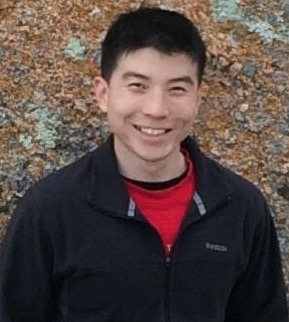
Mohamed Elmahdy
Why would a telecom and media company like AT&T want to hire a biomedical engineer?
That was my first thought when I saw the job posting. I was certainly surprised. Curiosity led me to find out more about the job. It then made sense. The sixth AT&T Foundry would focus on health care-related Internet of Things (IoT) applications.
Learning about how AT&T could impact health care intrigued me. So, I applied. To my surprise, I found I could bridge my knowledge and skills across multiple fields to produce unique, custom solutions.
My role at the AT&T Foundry includes innovating around the hardware design of a solution. I think not only of how the device works, but how a user will interact with the device. Think, wearable glasses for the visually impaired.
People consider biomedical engineering a translational field. It requires a knowledge base that spans across multiple engineering disciplines and sciences. This is what I loved most about the field. It suited my “jack-of-all-trades” nature.
Before joining the AT&T Foundry, I completed my PhD in Biomedical Engineering at the University of Houston. My coursework covered topics such as physiology, soft-tissue mechanics, fluidics, digital signal processing, and cellular biology. Research areas focused on cardiac tissue engineering and, my favorite, prototyping. I discovered my true passion lied in the work I did to design, prototype, and build these custom devices called “bioreactors.” They keep fabricated biological tissues alive.
Our world is becoming increasingly connected. But it’s not just about making things “smart” by connecting them to the internet anymore. Health care of the future is more personalized, predictive, and proficient. Smart predictions will let us foresee possible outcomes before conventional diagnoses.
Connectivity is our gateway. And we’re exploring where observations can occur. That ranges from designing and building medical enclosures, accessories and device prototypes to fabricating custom electronics with proper IoT support.
Sometimes the team starts from scratch. Other times, we modify or adapt an accessory for an existing device. So far, I’ve had a blast learning how some sensors and devices work on a more intimate level.
Instead of waiting for the industry to change, AT&T’s leading the IoT revolution. And I’m thrilled to be a part it.

James Yu
“That’s your job at AT&T? Wow…”
That’s usually the response I get when I tell people I’m a biomedical engineer at the Connected Health AT&T Foundry.
Between its location – inside Texas Medical Center’s Innovation Institute in Houston – and the medical industry’s push toward personalized health care, it was perfect timing. I couldn’t wait to explore ways to bring new innovations into the health care space.
My background is actually in electrical and computer engineering. Before joining the Foundry team, I worked at a medical device startup in Houston as a systems engineer. While there, I applied my coursework and knowledge of electronics, firmware, and software applications to develop medical devices such as pacemakers, MRI machines, and glucose monitors.
During that time, I also learned a lot about the various regulations and standards recognized by the U.S. FDA (Food and Drug Administration). They govern the health care industry.
I felt my varied background and experience in electronics, software, and medical devices would be a good fit for the AT&T Foundry’s goals and needs.
Innovating at the Houston AT&T Foundry usually starts with an “ideation day.” We bring in potential collaborators, and talk about a specific problem they face. We discuss ideas, and ways the Foundry team can help. Afterwards, my team helps test these ideas in our lab.
We have a 3D printer, so depending on what we come up with, we can print out mechanical housings quickly. In our electrical lab space, we can connect electronics and wire sensors that go into the housing.
Aligned with the IoT AT&T Foundry in Plano, Texas we can also collaborate and leverage their expertise in putting together these proofs of concepts.
I look forward to seeing LTE-M’s impact on the industry. It has the power to connect more devices than ever before. That means patients can remain connected to their health providers not only in the home, but also in the doctor’s office and hospital.
This will allow for truly connected and personalized health care experiences.
Health care affects everyone. It’s very motivating to know that the work I do can directly impact people, and help to improve their quality of life. There’s a lot to be excited about. I love my job.